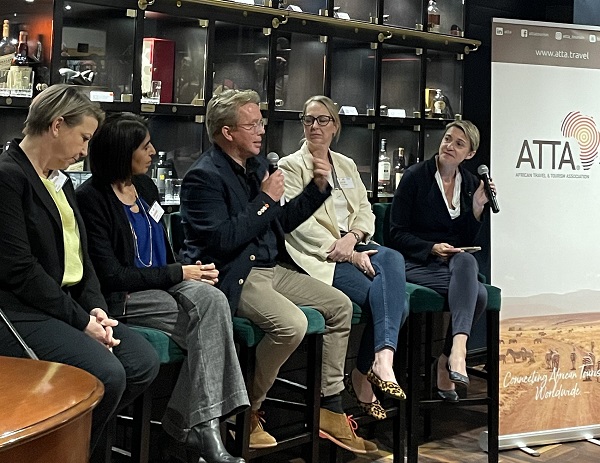WWF Living Planet Report 2022 – Building a nature-positive society
Insight Report: Sept 2022
Published by World Wildlife Fund
Weeva thinks this report is important as it highlights our planet’s critical dependency on biodiversity and a stable climate. Although the report provides a realistic, very scary, picture of our current state, it also presents scenarios whereby we can address biodiversity loss under a range of climate and development scenarios. The report so clearly states the crisis we are facing, the risks and what solutions are possible. Transformational change is required – shifts in how we produce, how we consume, how we govern, and what we finance.
“We know what’s happening, we know the risks and we know the solutions. What we urgently need now is a plan that unites the world in dealing with this existential challenge.”
Executive Summary
Today we face the double, interlinked emergencies of human induced climate change and the loss of biodiversity, threatening the well-being of current and future generations. As our future is critically dependent on biodiversity and a stable climate, it is essential that we understand how nature’s decline and climate change are connected.
The nature of these connections, the impacts they have on people and biodiversity, and building a positive, equitable, and sustainable future, are key themes in this edition of the Living Planet Report. In addressing these complex, interlinked challenges we recognise that there is no one-size-fits-all solution, nor one single source of knowledge. To create this edition, we have therefore woven together multiple voices and drawn on different sources of knowledge from around the world.
Land-use change is still the biggest current threat to nature, destroying or fragmenting the natural habitats of many plant and animal species on land, in freshwater and in the sea. However, if we are unable to limit warming to 1.5°C, climate change is likely to become the dominant cause of biodiversity loss in the coming decades. Rising temperatures are already driving mass mortality events, as well as the first extinctions of entire species. Every degree of warming is expected to increase these losses and the impact they have on people. We feature 3 stories of people on the frontline and how they are dealing with the consequences of local changes in climate and biodiversity.
Biodiversity indicators help us understand how our natural world is changing over time. Tracking the health of nature over almost 50 years, the Living Planet Index acts as an early warning indicator by tracking trends in the abundance of mammals, fish, reptiles, birds and amphibians around the world.
In its most comprehensive finding to date, this edition shows an average 69% decline in the relative abundance of monitored wildlife populations around the world between 1970 and 2018. Latin America shows the greatest regional decline in average population abundance (94%), while freshwater species populations have seen the greatest overall global decline (83%).
New mapping analysis techniques allow us to build up a more comprehensive picture of both the speed and the scale of changes in biodiversity and climate. For example, we feature the new biodiversity risk maps generated for the IPCC Working Group 2 report published in February 2022. These maps are the result of decades of work which has involved more than 1 million hours of computer time. We also explore an analysis using data from the IUCN Red List which allows us to overlay six key threats – agriculture, hunting, logging, pollution, invasive species and climate change – to highlight ‘threat hotspots’ for terrestrial vertebrates. To help us imagine a future where people and nature can thrive, scenarios and models – such as the Bending the Curve work featured in the 2020 Living Planet Report – can create ‘menus’ that indicate how we can most effectively address biodiversity loss under a range of climate and development scenarios. Now, researchers are exploring new lenses to add to this work, including the integration of equity and fairness. This could help to better target the urgent and unprecedented action needed to change our business-as-usual trajectory.
We know that transformational change – game-changing shifts – will be essential to put theory into practice. We need systemwide changes in how we produce and consume, the technology we use, and our economic and financial systems. Underpinning these changes must be a move from goals and targets to values and rights, in policy-making and in day-to-day life. To catalyse this, in 2022, the United Nations General Assembly recognised that everyone, everywhere, has the right to live in a clean, healthy and sustainable environment, meaning that for those in power respecting this is no longer an option but an obligation. Although not legally binding, the UN resolution is expected to accelerate action, just as earlier resolutions on the right to water in 2010 turbocharged progress in delivering safe water to millions of people.
This edition of the Living Planet Report confirms the planet is in the midst of a biodiversity and climate crisis, and that we have a last chance to act. This goes beyond conservation. A nature-positive future needs transformative – game changing – shifts in how we produce, how we consume, how we govern, and what we finance. We hope it inspires you to be part of that change.
Read the report: WED2022.pdf (unep.org)

Weeva supports knowledge sharing through the curation of key articles and reports across our industry. We encourage our community to improve their understanding of important topics and trends by engaging with this content and sharing it.
Other content you may like

ATTA partners with Weeva

A Practical Guide to living sustainably in harmony with nature
